Harold Davis's Blog, page 192
November 29, 2013
Hot springs resort
The hot springs resort of Yunomine Onsen nestles in a valley basin in the Kii peninsula of Japan, where it has provided respite to weary trekkers on the Kumano kodo for at least a thousand years. As far as I know, it is the only hot springs that is formally registered as a UNESCO world heritage site.

Japanese Hot Spring Resort © Harold Davis
A hot creek, belching steam runs down the center of the town. There are public baths anyone can use after paying a small fee beside the creek. Some of the pipes feed water from the hot springs to private baths such as the one shown below in the Ryokan in which I stayed.

Hot Spring Bath © Harold Davis
A local culinary specialty is fish, cooked in the waters from the hot springs. I was therefore amused to find that the darker pool to the right of the bath is used to “keep fish fresh” until it is time to cook them. I took a bath in the hot spring with a gentle rain falling, and listened to the fish plash in their own pool next door, trying not to consider the fact that I might be having one of them for breakfast.

Dark Forest: Bristlecone Pines at night
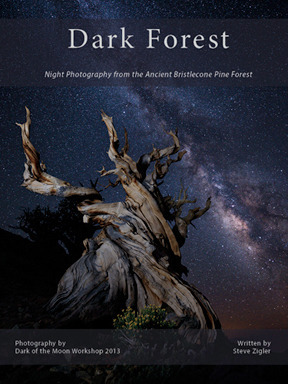 A group of photographers from the 2013 Dark of the Moon Night & Bristlecone Photography workshop have just published a collection of photographs taken during the workshop. Fifteen photographers contributed images for the book, which is titled “Dark Forest.”
A group of photographers from the 2013 Dark of the Moon Night & Bristlecone Photography workshop have just published a collection of photographs taken during the workshop. Fifteen photographers contributed images for the book, which is titled “Dark Forest.”
The effort was led by one of the workshop attendees, Steve Zigler, who also wrote a collection of informative essays about the Ancient Bristlecone Pine Forest and the spectacular night sky above the White Mountains.
The book is available on Blurb at this link: http://blur.by/1elr838. Please check it out!
The photographers will donate any profit generated from the sale of the book to the Field Institute at Point Reyes and the University of California White Mountain Research Center.

November 27, 2013
The Way of the Digital Photographer a best photography book of 2013
I’m very excited that my book The Way of the Digital Photographer: Walking the Photoshop post-production path to more creative photography has been named one of the best photography books of 2013 by Photo.net.
Photo.net writes that “The Way of the Digital Photographer by Harold Davis is all about the ‘camera-computer partnership’ of the digital medium. Using Photoshop as the editing software of choice, the very talented author takes you far beyond Photoshop 101. Instead, he focuses on ways to use Photoshop to enhance creativity, using incredible photography examples. For example, he uses 35 four minute exposure photos of a night sky with a pre-sunset shot of the same location, and uses this beautiful masterpiece to show you the screen blending mode.
“Who is this book for? Though this covers the fundamentals in the beginning of the book, this is really for intermediate Photoshop users that have some basic knowledge to start with. This is also for people that want to go beyond the purist mentality; those willing to expand their photos into more artistic realm.”
Thanks Photo.net!

November 26, 2013
Tokyo Stairs
Before heading to Kyoto on the bullet train, I spent a little time in the morning wandering around Tokyo. These stairs were to a pedestrian walkway over Chuo-dori in the Ginza district.

Tokyo Stairs via iPhone © Harold Davis

November 24, 2013
Pagoda at Nachi-san
The three-story pagoda Seiganto-ji is part of the Kumano Sanzan temple complex in Nachi-san at the end of the Kumano kodo pilgrimage trail. This is a very special place, located near Nachi Falls, a site for nature worship going back millennia. The temple itself is a UNESCO World Heritage Site, and nominally Tendai Buddhist—although like many Japanese religious sites, it is actually a syncretic combination of Shintoism and Buddhism. In the case of Kumano Sanzan and Seiganto-ji, the temple is one of the rare ones whose dual heritage survived the Meiji restoration’s forcible separation of the two religions and the government establishment of Shintoism as the official state religion in the late 1800s.

Seiganto-ji pagoda at Nachi-san © Harold Davis
To make this photo, I wanted the Nachi waterfall to be as important a part of the image as the pagoda. To achieve this aim, I used a 10EV neutral density filter and a polarizer in the late afternoon to increase the length of my exposure. This is a six minute exposure at f/29 and ISO 100—with the length of the exposure flattening out the waterfall, and making the movement of other elements (such as people on the pagoda) irrelevant.

Harold Davis 2014 Workshop Schedule
I hope to see you at a photography workshop in 2014. I have the following workshops definitely scheduled for 2014:
2014.01.25—2014.01.26—Mastering Creative Photoshop: The Way of the Digital Photographer—This workshop covers developing a personal digital Photoshop workflow. Topics explained in detail include archiving and checkpoints, RAW processing, multi-RAW processing, HDR, hand-HDR, stacking, LAB color creative effects, monochromatic conversions, using backgrounds and textures, layers, layers masks, working with channels, Photoshop filters, and plugins from Nik Software, onOne Software, and Topaz. If you’ve ever wondered how Harold does it, or wanted to learn how to incorporate his techniques in your own digital workflow, this is the workshop for you!—Space is available, click here for info and to register.
2014.02.22—2014.02.23—Photographing Flowers for Transparency: Two Day Workshop with Harold Davis—a unique opportunity to learn Harold’s techniques, workshop location is Berkeley, California (Limited space is available, click here for information and registration).
2014.03.15—Achieving Your Potential As a Digital Photographer: A Multi-Modal Ongoing Six Month Workshop
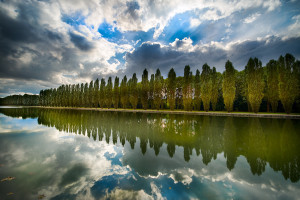
Just So © Harold Davis
This workshop provides a platform for ongoing mentoring in the context of a supportive group environment. Customized individual assignments will be given. After the initial intensive two-day in-person session, we will keep in touch with monthly private group online webinars and individual phone or email consultations. A final dinner to review work and celebrate our progress will be provided at the conclusion of the workshop. Limited to 12 photographers. A portfolio review is required—Limited space availability, click here for info and instructions on how to apply.
2014.04.15—Full Moon Workshop: Photograph the Golden Gate Bridge Like You Never Have Before: hands-on adventure with Harold Davis (Two spaces available, click here for information and registration).
2014.04.26-2014.05.04—Photograph Paris with Harold Davis featuring Paris at night, the gardens at Giverny, black & white, and more. Click here for detailed information and itinerary, and click here for online registration. Here’s what one participant in a previous Harold Davis Photograph Paris workshop had to say: “Had an awesome time with Harold, Mark, and the workshop participants. Itching to go back. If you’re a photographer, Paris at night is a ‘Must Do!’. Put it on your bucket list ‘cause you may not see this in Heaven.”
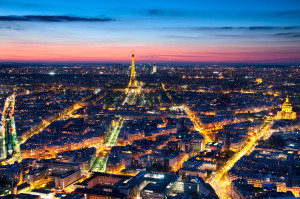
Les Lumières de Paris © Harold Davis
2014.6.27-2014.6.30—Creative Flower Photography, in Heidelberg, Germany. An on-line registration link will be available in the next month.
2014.7.04-2014.7.07—Creative Black & White Photography and Monochromatic HDR, in Heidelberg, Germany. An on-line registration link will be available in the next month.
Also of note: We’ve had many requests for information regarding a 2014 Bristlecone Pine workshop, and plans for this workshop are under consideration pending several significant issues. I will keep you posted on the decision we reach.
I am in the very early stages of planning a 2015 off-the-beaten track Japan photography workshop. Please bear in mind that this workshop will involve eating, sleeping and bathing the way the Japanese do, and with this constraint in mind let me know if you’d like to make a preliminary expression of interest.
What folks have said about Harold Davis workshops and events:
“A great artist and speaker!”—W. Anglin
“Harold is genuine, generous, and gracious – He has a world of knowledge and expertise that he loves to share – his wonderful books show his monumental talents and skill set- his workshops shows the depth of his connecting with others in a very real and personal way.”—P. Borrelli
“Awesome! He patiently addressed questions from the audience which contained photographers of all levels , molding his answers to the level of understanding for each of us. His presentations covered a wonderful range of technical knowledge as well as emphasizing the need for images to have an emotional quality. The images he shares are breathtaking and he is generous in sharing many facets of how he captures such beauty.”—J. Phillips
“Not all photographers are good verbal communicators. Harold is someone who can DO and TEACH. A rare combination of talents.”—B. Sawyer
“Inspiring!”
“He was very giving of his talents and time. The course was very organized and thorough. Loved it! Learned so much! … I also wanted to let you know that I have more than paid the cost of the workshops I’ve done with you by selling some photos! I have sold three prints already.”—L. Beck
“Very creative and a marvelous instructor.”—Kay S.

Nautilus in Black & White © Harold Davis

November 22, 2013
Give the gift of my Flower Photography course

Flowers of Late Summer © Harold Davis
 My friends at Craftsy write: “With the holiday season fast approaching, remind your followers that they can give the gift of making by gifting your Craftsy Flower Photography class!
My friends at Craftsy write: “With the holiday season fast approaching, remind your followers that they can give the gift of making by gifting your Craftsy Flower Photography class!
“It’s as easy as sharing your trackable link to the gift page for your class http://www.craftsy.com/ext/HaroldDavis_GiftMyClass and the ‘Gift My Craftsy Class’ badge” on the left. Your gift recipients will get a nice e-card with a red ribbon, telling them about your gift!”

November 21, 2013
Of drinking and not driving
Aya, her father, and a business associate met me at the small Awa Yamakawa train station. It was already getting dark, so we drove across the river to a restaurant in an old village for dinner. This was a reasonably traditional Japanese meal in a private room on a tatami mat with shoes removed.
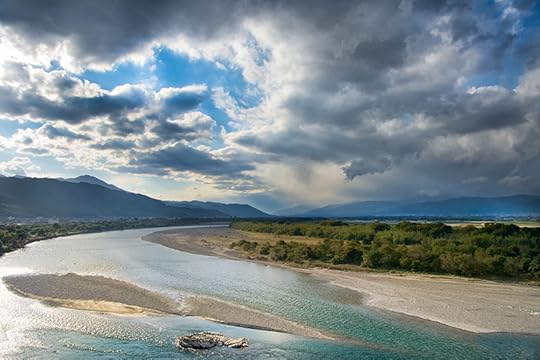
Yoshina River, Tokushima Prefecture, Shikoku © Harold Davis
My three companions had a beer each, but I passed and kept to tea with the meal. After we were through with dinner, and getting ready to drive me to the Japanese-style inn where I would be staying, Awa’s father asked me, “Do you have an international driver’s license?”
I did not, and frankly no wish to drive on the left side of the road in a country with strange road signs that I could not read. But why?
It turns out that in Japan one beer puts you over the legal alcohol blood-level limit for driving. And the fines are enormous, 200,000 Yen (or about $2,000) for the driver and each passenger and the restaurant that served the booze and let them drive.
So what people do is call a special taxi service. The service shows up with two drivers—one for your car, and one for the taxi to follow it.
There’s not much drinking and driving in Japan!

Japanese Letterpress Slugs © Harold Davis

November 19, 2013
Riding the Big Tuna
When Kayoko at the Sakuraya Guesthouse in Nara had helped me figure out my transportation logistics, she saw the Nankai Ferry ticket in the folder from the travel agent, and exclaimed, “Oh, you’ll be riding the ‘Big Tuna’!”
The Nankai Ferry is indeed a very big boat. It carries cars as well as people. Steaming out of the port of Wayakama on my way to Shikoku Island, I was surprised not only at the size of the boat but also the size and extent of industry that seems to dominate much of the Japanese coast.

Leaving Wayakama Port © Harold Davis
The interior of the boat held a number of surprises for me as well. First, much of the lounge space was devoted to a tatami area. This is what Japanese people are used to in their homes, restaurants and hotels. You take your shoes off, and lie down on the floor, maybe to sleep or play with the kids. It was odd, but pleasant, to see everyone lounging on the floor inside the Big Tuna.
The other major inside space was devoted to game machines, and—thank the Internet deities—free wi-fi!
My approach with boats is always to try to find as high a place as possible on the outside with a frontal view. Alas, on the Big Tuna this was not possible. All the exterior space faced the back of the boat. The only place to get a forward view is inside—where you pay an extra fee to go into a special overheated lounge with reclining chairs and a forward-facing view.
Aya told me that before they built the Shikoku-Honshu series of bridges—connecting Shikoku to Honshu Island and the mainland across the Inland Sea, and completed in 1999—the way to get to Shikoku was by ferry. These days, a more common approach is by bus from Osaka (it is about a four hour ride from Osaka to Tokushima). So my approach to Shikoku was very traditional, as befits a pilgrim coming off the Kumano kodo.

Bus train taxi ferry taxi train
At the long-sought end of the Kumano kodo lies Nachi-san, a sort of religious Shangri-la nestled in the mountains with—finally!—a view of the Pacific Ocean. While some pilgrims do it the hard way and walk the ancient stones of the Kumano kodo up to mountain passes and down through valleys to arrive in Nachi-san, most visitors arrive by scheduled bus, or by tour bus. Like Lourdes in France, or Mt Koya in Japan, Nachi-san is a destination for religious tourists, almost all of whom are Japanese. The constant construction on the temple complexes indicates what a booming business this religious tourism is.
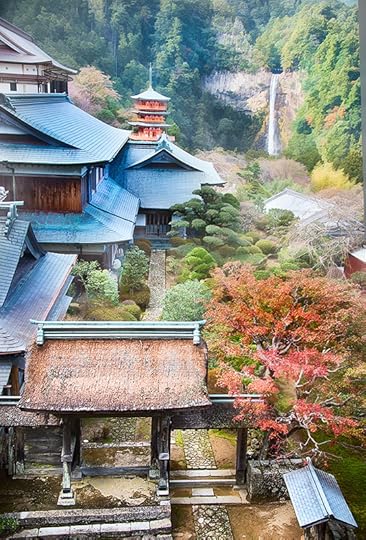
Nachi-san © Harold Davis
Religious tourism or not, the site is beautiful, and there are still plenty of stairs to climb even if the destination was reached by bus. As I shouldered my tripod and paid my 500 Yen extra to get close to the holy waterfall (shown in the rear of the photo above) I couldn’t help feel sadness at leaving the Kii peninsula and the Kumano kodo pilgrimage area. The next day I would be taking a bus, train, taxi, ferry, another taxi, and a train—where Aya would meet me at the little Awa Yamakawa train station in Tokushima Prefecture on Shikoku, the least populous of Japan’s four major islands.





